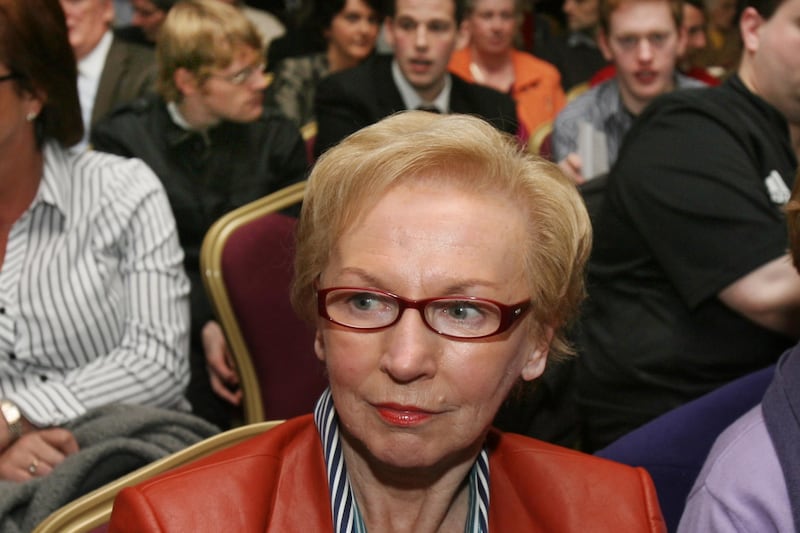For almost a decade, Facebook has fretted over an existential problem: it is failing to attract young users in the US.
Internal documents show that the number of US Facebook users under 30 is in decline and that Instagram, which has been phenomenally popular since being bought by Facebook in 2012 for $1 billion (€850 million), appears to be reaching the limits of its growth among younger users in key markets, raising serious questions about the company's future.
Now, one of the company’s solutions to its growth challenges – encouraging users to open multiple accounts – is causing technical, reputational and legal headaches.
In particular, Facebook seems to be struggling to accurately count how many real users its services have. This is causing problems for its advertising business, the main driver of its revenues, which rose 56 per cent in the past quarter to $29.1 billion.
The issue was revealed in documents disclosed by former Facebook employee Frances Haugen to regulators and Congress, and obtained in redacted form by a number of news organisations, as well as court and other regulatory filings.
One internal study from 2021 of 5,000 new users found that about 40 to 60 per cent of new US accounts are made by users who already have a Facebook account, a huge share for a platform that originally aimed to represent a person’s real identity online. It added that Facebook may even be underestimating the scale of duplicate accounts.
Another research note found that there are now more US accounts registered to 18- to 30 year-olds on the app than actual people in that demographic, deeming this an “elephant in the room”. It added that this oversaturation could have a knock-on impact on other related metrics, making them less reliable.
Verification
The reliability of Facebook’s statistics has led to pressure from many marketers for the company to open up its platforms to third-party verification.
"At least in financing you can have auditors," said Melinda Byerley, founder of digital marketing consultancy Fiddlehead. "There's no third party that oversees the quality of [Facebook's] data, and boy is that scary."
Facebook said that in the past quarter it had 2.9 billion monthly users across the world and that users had risen 7 per cent year on year. The company does not strip out duplicate accounts from these quarterly user figures but does provide them in an annual regulatory filing. In 2020, the company estimated that 11 per cent of monthly active users were duplicates.
Often, multiple accounts are created because a user cannot access an existing one, a problem Facebook tries to solve by directing users to reset their passwords.
But memos show that Facebook and Instagram staffers are also pushing for users to open multiple accounts as part of a growth strategy. Internal research dating back as far as 2018 suggested that allowing users, particularly teenagers, to create multiple identities and profiles drives engagement, “large growth and sharing increases”.
For example, many Instagram users have both a private and a public account. But market penetration among teenagers on the platform in the US and UK stands at 108 and 132 per cent respectively because of duplicate accounts, according to a slide deck first published by the Wall Street Journal.
Facebook’s share price has fallen 9 per cent since the WSJ began publishing revelations from the internal documents obtained by Haugen.
"It's not a revelation that we study duplicate accounts, and this snapshot of information doesn't tell the full story," said Joe Osborne, a Facebook spokesperson.
“Nothing in this story changes the estimate of duplicate accounts we disclose in our public filings, which includes new users, or that we provide context on in our ad products, ad interfaces, in our help centres, and in other places.”
The TikTok threat
How much further Facebook can grow, particularly in the west, is unclear, and a complaint filed with the US Securities and Exchange Commission from Haugen alleges that the company has been hiding the scale of the challenge from its investors.
According to a March 2021 document cited in the SEC complaint by Haugen, daily user numbers in the US on Facebook have fallen 2 per cent and 13 per cent over the past two years for young adults – aged 18 to 29 – and teens respectively; by 2023, the company projects further declines of 4 per cent and 45 per cent respectively.
Meanwhile, for Instagram, younger users are spending less time on the app and producing less content. The biggest current threat appears to be TikTok, the video-sharing app. Users spend two to three times more time on TikTok than on Instagram, researchers estimated in one 2021 document, which was first reported by the WSJ.
“Facebook is irrelevant for teens, that’s just a fact,” said one former senior staffer involved in the company’s effort to attract a younger audience. “Instagram is the on-ramp for younger users – and that’s becoming increasingly threatened by TikTok. That is an existential threat to Facebook.”
Haugen also alleged in the SEC complaint that the inclusion of duplicate accounts in Facebook’s user numbers has not only masked user declines but has meant the company has charged some advertisers twice in some cases. One 2018 study showed that by Facebook’s own estimates, for nearly 20 per cent of advertisers running a broad ad campaign, their audience would have been reduced by more than 10 per cent if duplicate accounts were removed.
"It is reasonable to assume the SEC will be looking into whether Facebook made any material omissions or misrepresentations in its public statements, including SEC filings," said Joseph Grundfest, a law professor at Stanford and a former SEC commissioner. He said the regulator might consider for example whether the failure to report duplicate accounts on a quarterly basis is "material".
Advertisers’ trust
Facebook is also fighting a California class action lawsuit which alleges that the company deliberately overstated its potential audience to marketers by including duplicate accounts, but did not disclose this in order to “preserve its bottom line”.
Previously unsealed documents show that employees, including executives, raising concerns internally, with one suggesting the company was generating “revenues we should never have made”.
Facebook has strongly denied the claims and argued that its “potential reach” figure to advertisers is merely an estimate. Instead, the company says, advertisers pay for the actual clicks and impressions of ads.
In one unsealed email in the court documents, a Facebook employee wrote that the company’s revenue was dependent on reach estimation for nearly a tenth of revenues when brands pay to boost posts, citing past studies. But in a separate filing submitted in support of Facebook, another employee disputed this, saying they had found no such relevant studies.
It is not the first time Facebook’s metrics have been exposed in court. In 2016 Facebook paid a $40 million settlement to some marketers, admitting that it had miscalculated the average viewing times of some video adverts. In some cases, the plaintiffs claimed, average view times were inflated by as much as 900 per cent.
“We make extensive disclosures in our SEC filings about the challenges we face, including user engagement [and] estimating duplicate and false accounts,” Facebook’s Osborne said. “We are confident that our disclosures give investors the information they need to make informed decisions.” – Copyright The Financial Times Limited 2021
















